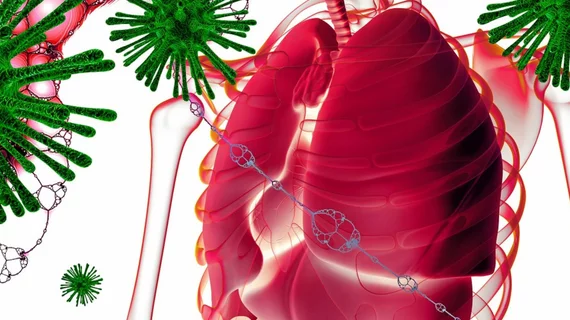Cutting-edge MRI method reveals persistent COVID-19 lung damage missed by routine CT
A “cutting-edge” MRI method has revealed persistent COVID-19 lung damage overlooked by routine CT, according to new research published Tuesday in Radiology.
There have been reports of patients grappling with symptoms weeks or months after contracting the novel coronavirus. Fatigue and breathlessness are two of the most common traits of “long COVID,” as some have dubbed it.
Wanting to better understand this concern, U.K. researchers examined long-haulers using hyperpolarized xenon MRI (XeMRI), which enables sensitive, regional investigation of breathing and gas transfer into the blood stream. They discovered abnormalities in the lungs of some COVID-19 patients more than three months after discharge, despite other measurements appearing normal.
“Our follow-up scans using hyperpolarized xenon MRI have found that abnormalities not normally visible on regular scans are indeed present, and these abnormalities are preventing oxygen [from] getting into the bloodstream as it should in all parts of the lungs,” principal investigator Fergus Gleeson, a professor of radiology at the University of Oxford, said in a statement.
Gleeson and colleagues conducted their prospective study on nine patients evaluated three months after hospital discharge for COVID in late 2020. Alongside five more healthy test subjects, study participants underwent lung function tests, XeMRI, and a low-dose chest CT. The specialized MRI spotted greater gas-transfer abnormalities after COVID pneumonia, even when D-dimer, hemoglobin and lung-function tests landed within normal ranges.
Researchers are now beginning to test patients who weren’t hospitalized with the virus but have been attending long COVID clinics. Gleeson and colleagues said a larger study is needed to identify how common these concerns are, and how long patients may take to recover.
“We have some way to go before fully comprehending the nature of the lung impairment that follows a COVID-19 infection,” Gleeson said in the statement. “But these findings … are an important step on the path to understanding the biological basis of long COVID and that in turn will help us to develop more effective therapies.”
Read more about their study in the Radiological Society of North America’s official journal here.

